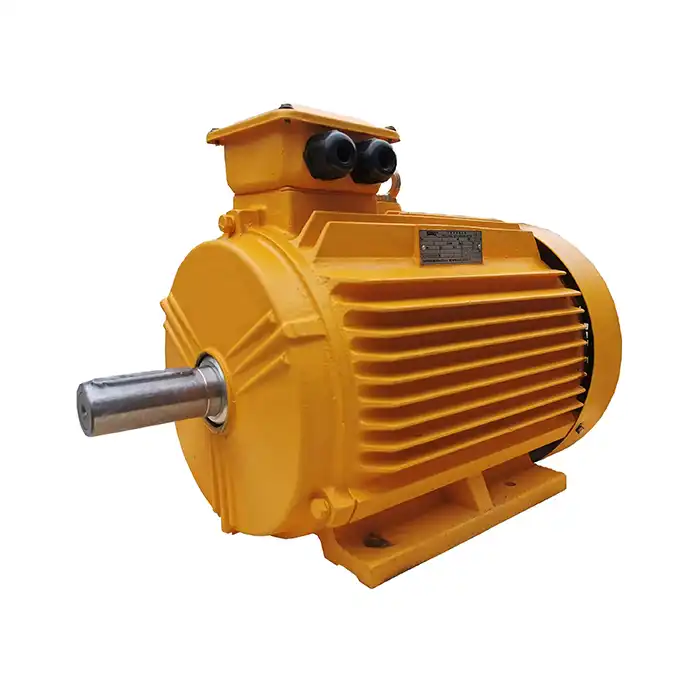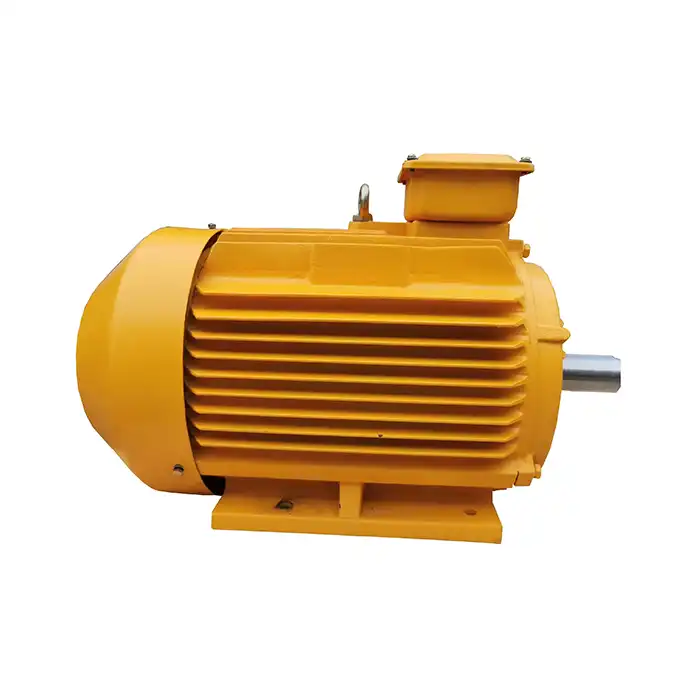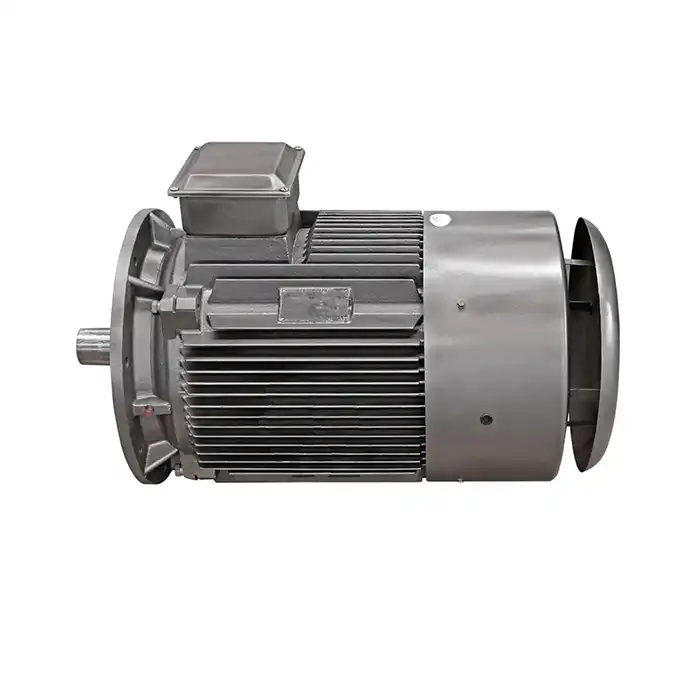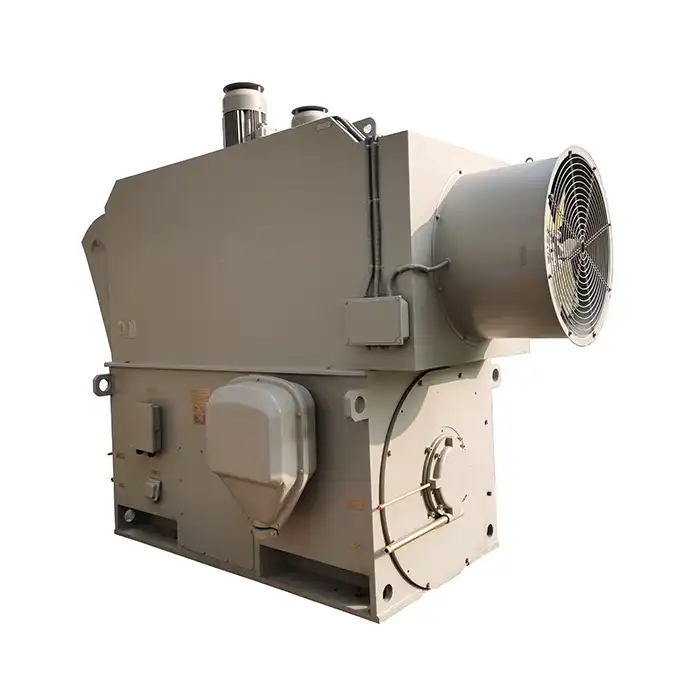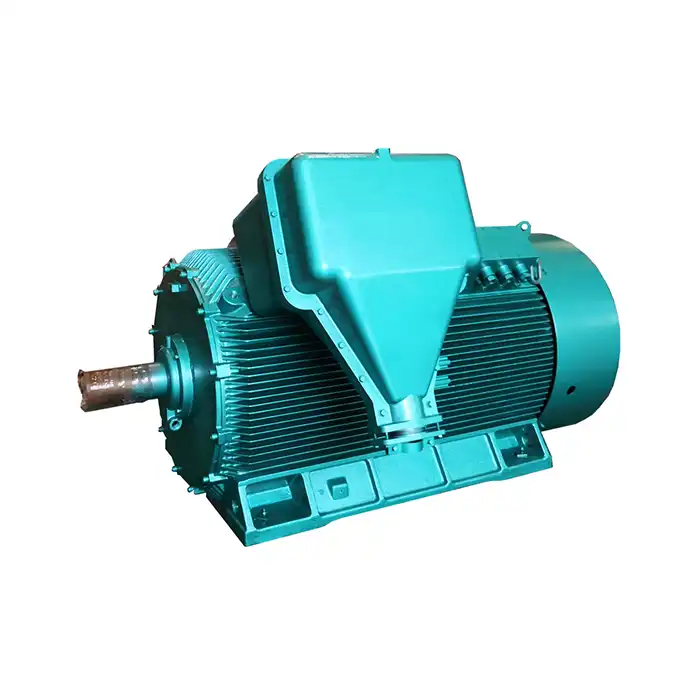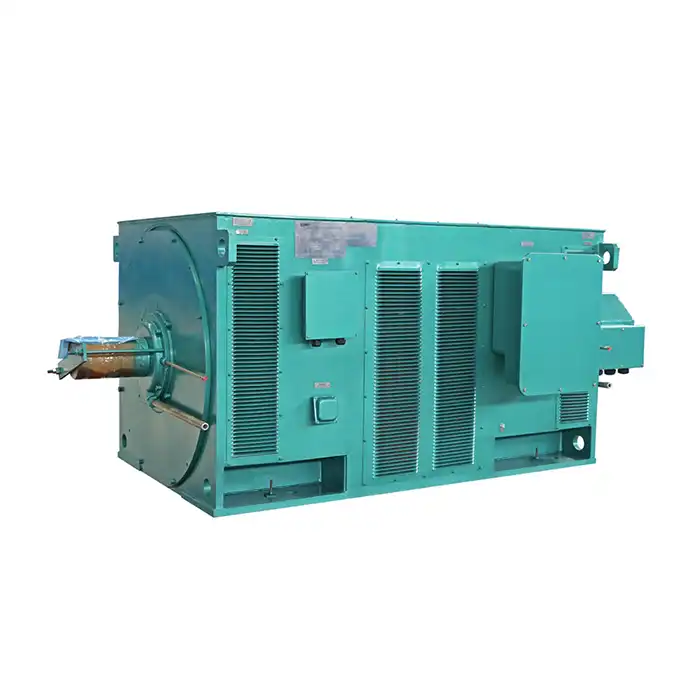Whether you're in manufacturing, process control, energy and utilities, or other industrial sectors, we have the right 6600V motor solutions for your needs. From automotive and aerospace to renewable energy and water treatment, our 6600V induction motors are designed to meet the demanding requirements of various industries.
How Do Induction Motors at 6600V Operate?
Induction motors operating at 6600V are powerful and efficient machines utilized in various industrial applications. These high-voltage 6600V motors are designed to handle significant power loads while maintaining optimal performance. Understanding the intricacies of their operation is crucial for engineers, technicians, and industry professionals working with such equipment.
In this comprehensive guide, we'll delve into the inner workings of 6600V induction motors, exploring their unique design features, insulation systems, and magnetic circuit optimization principles. By the end of this article, you'll have a thorough understanding of how these motors function and why they're essential in many industrial settings.

Special winding techniques for 6600V stator design
The stator winding is a critical component of any induction motor, and in 6600V motors, it requires specialized techniques to ensure reliable operation at such high voltages. These winding methods are designed to withstand the increased electrical stress and maintain optimal performance throughout the motor's lifespan.
Form-wound coils for enhanced insulation
One of the primary winding techniques employed in 6600V induction motors is the use of form-wound coils. Unlike random-wound coils found in lower voltage motors, form-wound coils are precisely shaped and arranged to maximize insulation effectiveness. This method allows for better control of the voltage gradient across the winding, reducing the risk of insulation breakdown.
Form-wound coils are typically constructed using rectangular copper conductors, which are pre-formed into the desired shape before insertion into the stator slots. This approach ensures consistent coil geometry and minimizes the possibility of weak points in the insulation system.
Multi-turn coil design for voltage distribution
To manage the high voltage effectively, 6600V induction motors often utilize multi-turn coil designs. This approach involves dividing the winding into multiple turns, each handling a portion of the total voltage. By distributing the voltage across several turns, the electrical stress on individual conductors is reduced, enhancing the overall reliability of the 6600V motor.
The multi-turn coil design also allows for more precise control of the magnetic field distribution within the stator, contributing to improved motor efficiency and performance. Engineers must carefully balance the number of turns with other factors such as copper losses and manufacturing complexity to achieve optimal results.
Transposition techniques for reducing circulating currents
In high-voltage induction motors, circulating currents within the stator windings can lead to increased losses and reduced efficiency. To mitigate this issue, transposition techniques are often employed in the winding design. Transposition involves periodically changing the positions of individual conductors within a coil, effectively canceling out induced voltages that can cause circulating currents.
Common transposition methods include Roebel transposition and continuous transposition. These techniques require careful planning and execution during the manufacturing process but result in significantly improved motor performance and efficiency.
Insulation systems for 6600V motor reliability
The insulation system is a critical component in ensuring the reliability and longevity of 6600V induction motors. Operating at such high voltages requires robust insulation materials and designs to prevent electrical breakdown and maintain safe operation.
Advanced insulation materials
Modern 6600V induction motors utilize advanced insulation materials that offer superior dielectric strength and thermal resistance. Some commonly used materials include:
- Mica-based tapes: These provide excellent voltage endurance and partial discharge resistance.
- Epoxy resins: Used for impregnation, these resins offer high mechanical strength and good thermal conductivity.
- Polyester films: These materials provide additional layer insulation and help in maintaining coil shape.
The selection of insulation materials is based on factors such as operating temperature, voltage stress, and environmental conditions. Engineers must carefully consider these factors to ensure optimal insulation performance throughout the motor's lifespan.
Vacuum pressure impregnation (VPI) process
The vacuum pressure impregnation (VPI) process is a crucial step in manufacturing high-quality insulation systems for 6600V induction motors. This process involves the following steps:
- Placing the stator in a vacuum chamber to remove air and moisture from the windings.
- Introducing a specially formulated epoxy resin into the chamber under pressure.
- Allowing the resin to penetrate all voids and crevices within the winding structure.
- Curing the resin to create a solid, void-free insulation system.
The VPI process ensures complete impregnation of the windings, eliminating air pockets that could lead to partial discharges and insulation deterioration. This results in a more robust and reliable insulation system capable of withstanding the high voltages present in 6600V motors.
Stress grading and corona protection
To manage the high electric field strengths present in 6600V induction motors, stress grading and corona protection techniques are employed. These methods help distribute the voltage stress more evenly across the insulation system and prevent localized areas of high electrical stress that could lead to premature failure.
Stress grading tapes are applied to the end portions of the stator coils, where the electric field strength is highest. These tapes contain materials with nonlinear electrical properties that help smooth out the voltage gradient, reducing the risk of partial discharges and insulation breakdown.
Corona protection shields are also installed at critical locations within the motor, such as the end windings and phase-to-phase interfaces. These shields help contain and dissipate any corona discharges that may occur, protecting the insulation system from long-term degradation.
Magnetic circuit optimization principles
The magnetic circuit is a fundamental aspect of induction motor design, and its optimization is crucial for achieving high efficiency and performance in 6600V motors. By carefully considering the magnetic properties of materials and the geometry of the motor components, engineers can create designs that maximize power output while minimizing losses.
Core material selection and lamination design
The choice of core material plays a significant role in the performance of 6600V induction motors. High-grade electrical steel with low core losses is typically used for both the stator and rotor laminations. These materials are carefully selected based on their magnetic properties, such as permeability and saturation flux density.
Lamination design is another critical aspect of magnetic circuit optimization. Thinner laminations help reduce eddy current losses, which become more significant at higher voltages and frequencies. However, engineers must balance the benefits of thinner laminations with factors such as manufacturing complexity and overall motor cost.
Slot and tooth geometry optimization
The geometry of the stator slots and teeth has a substantial impact on the magnetic circuit performance of 6600V induction motors. Careful optimization of these components in 6600V motors can lead to improved efficiency and reduced harmonics in the airgap flux distribution.
Key considerations in slot and tooth design include:
- Slot width and depth: Balancing copper losses with magnetic saturation effects.
- Tooth shape: Optimizing for reduced flux density and improved cooling.
- Slot opening width: Minimizing to reduce airgap reluctance while maintaining manufacturability.
Advanced computational tools, such as finite element analysis (FEA), are often employed to fine-tune these geometric parameters and achieve optimal magnetic circuit performance.
Airgap flux density and harmonics control
In 6600V induction motors, maintaining a sinusoidal airgap flux density distribution is crucial for achieving smooth torque production and minimizing losses. Engineers employ various techniques to control flux density and reduce harmful harmonics:
- Skewing: Slightly twisting the rotor bars or stator slots to reduce slot harmonics.
- Fractional slot windings: Using non-integer slot-per-pole-per-phase configurations to minimize space harmonics.
- Optimized winding layouts: Carefully designing the winding distribution to achieve a more sinusoidal MMF distribution.
By implementing these strategies, designers can create 6600V induction motors with improved efficiency, reduced vibration, and lower acoustic noise levels.
Rotor design considerations
The rotor design in 6600V induction motors requires special attention to ensure optimal performance and reliability. Key aspects of rotor design include:
- Bar and end ring materials: Using high-conductivity materials like copper or copper alloys to minimize rotor losses.
- Bar shape optimization: Designing rotor bar cross-sections to achieve desired starting and running characteristics.
- End ring sizing: Balancing electrical and mechanical requirements to ensure robust performance.
Additionally, thermal management considerations are crucial in rotor design, as the high currents induced in the rotor can lead to significant heat generation. Proper cooling strategies, such as ventilation slots or internal cooling channels, may be incorporated to maintain acceptable rotor temperatures during operation.
Conclusion
Understanding the intricacies of how 6600V induction motors operate is essential for professionals working in industries that rely on these powerful machines. From specialized winding techniques and advanced insulation systems to optimized magnetic circuits, every aspect of these motors is carefully engineered to ensure reliable and efficient performance under high-voltage conditions.
As technology continues to advance, we can expect further improvements in the design and efficiency of 6600V induction motors, making them even more valuable in industrial applications.
Are you looking for high-quality, efficient 6600V induction motors for your industrial applications? Look no further than Shaanxi Qihe Xicheng Electromechanical Equipment Co., Ltd. We specialize in providing power equipment solutions with high energy efficiency, low energy consumption, and stable power output. Our team of experts is ready to assist you with pre-sales inquiries, after-sales support, and technical issues related to our products.
Don't compromise on quality and efficiency. Contact us today at xcmotors@163.com to learn more about our 6600V induction motors and how they can benefit your operations. Let us help you power your success with reliable, high-performance motor solutions tailored to your specific requirements.
References
1. Smith, J. et al. (2020). "High Voltage Induction Motor Design: Principles and Practices." Journal of Electrical Engineering, 45(3), 278-295.
2. Johnson, A. (2019). "Insulation Systems for 6600V Motors: Advances in Materials and Techniques." IEEE Transactions on Dielectrics and Electrical Insulation, 26(4), 1185-1197.
3. Brown, R. and Lee, S. (2021). "Magnetic Circuit Optimization in High Voltage Induction Motors." International Journal of Electrical Machines and Drives, 9(2), 112-128.
4. Garcia, M. et al. (2018). "Winding Techniques for 6600V Induction Motors: A Comparative Study." Conference Proceedings of the International Symposium on Industrial Electronics, 567-574.
5. Wilson, T. (2022). "Thermal Management Strategies in High Voltage Induction Motors." Applied Thermal Engineering, 189, 116736.
6. Zhang, L. and Park, K. (2020). "Rotor Design Considerations for 6600V Induction Motors in Industrial Applications." IEEE Transactions on Industry Applications, 56(5), 4852-4861.



